Greenhouse Effect
Carbon dioxide
The greenhouse effect is a natural phenomenon that maintains the Earth's temperature at an average of 15oC . Without the greenhouse effect Earth's temperature would be a chilling -18° C. The greenhouse gases such as water vapour, methane and carbon dioxide cause the atmosphere to trap more heat energy than would otherwise be absorbed if these gases were not present. Of the infrared radiation that is emitted back into space, a large percentage is trapped by greenhouse gases. However, since the industrial revolution, human activity has caused an increase in the concentration of the major greenhouse gases. Scientists believe that an increase in greenhouse gases has contributed to global warming and predict that by 2050 Earth's global temperature may increase by up to 3° C from current temperatures.
Of all the solar energy reaching
Earth 31% is reflected back into space while a large percentage is absorbed
by clouds and other atmospheric gases. Click
to see an animation of the overall absorption of solar energy. The remaining
energy causes many effects including, heating the surface of the Earth,
melting ice, evaporating water and initiating plant photosynthesis.
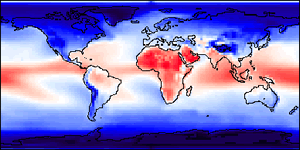
Below we will discuss carbon dioxide, its output and reasons why it is a greenhouse gas.
The bonds of some molecules can vibrate with the same frequency as that of infrared radiation. The bonds of such molecules, as CO2, absorb this energy and vibrate with greater energy. The bonds of the carbon dioxide molecule can stretch and bend. Other molecules that can vibrate in this frequency include methane (CH4) and water (H2O).
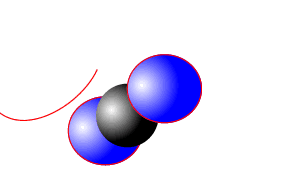
Solar radiation penetrates through the atmosphere and warms the surface of the Earth. The surface then emits invisible heat radiation some of which finds each way back into space. However, some of it is absorbed by CO2 and other greenhouse gases in the middle levels of the atmosphere. Thus not all the energy escapes into space and some of it lingers in the atmosphere causing global warming.
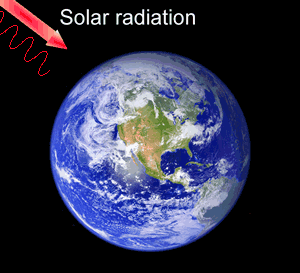
Burning of fossil fuels is the major contributor to atmospheric carbon dioxide. Although there are many other greenhouse gases, some more potent in absorbing infrared radiation than CO2, carbon dioxide stands out due to its overwhelming release into the atmosphere from human sources.
The production of carbon dioxide from the burning of fossil fuels is given on the right.
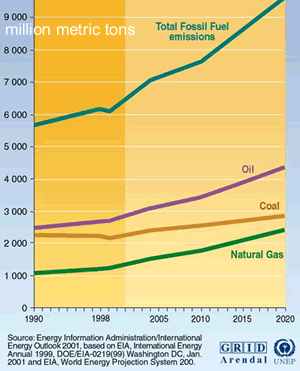
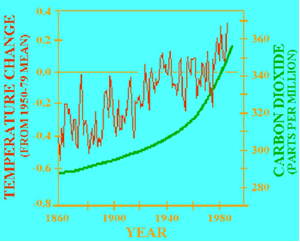
Some people argue that the Greenhouse effect is a natural phenomenon. Explain why?
If the Greenhouse effect is a natural phenomenon why are we so alarmed?
How does carbon dioxide heat up the Earth's atmosphere?
Not all gases are classified as Greenhouse gases. Why is carbon dioxide and not oxygen classified as a Greenhouse gas?
*What are fossil fuels?
- Give two examples.
- What are fossil fuels mainly used for? (give two examples)
Why do Greenhouse gases absorb infrared radiation and not the stronger U.V radiation?
* Research